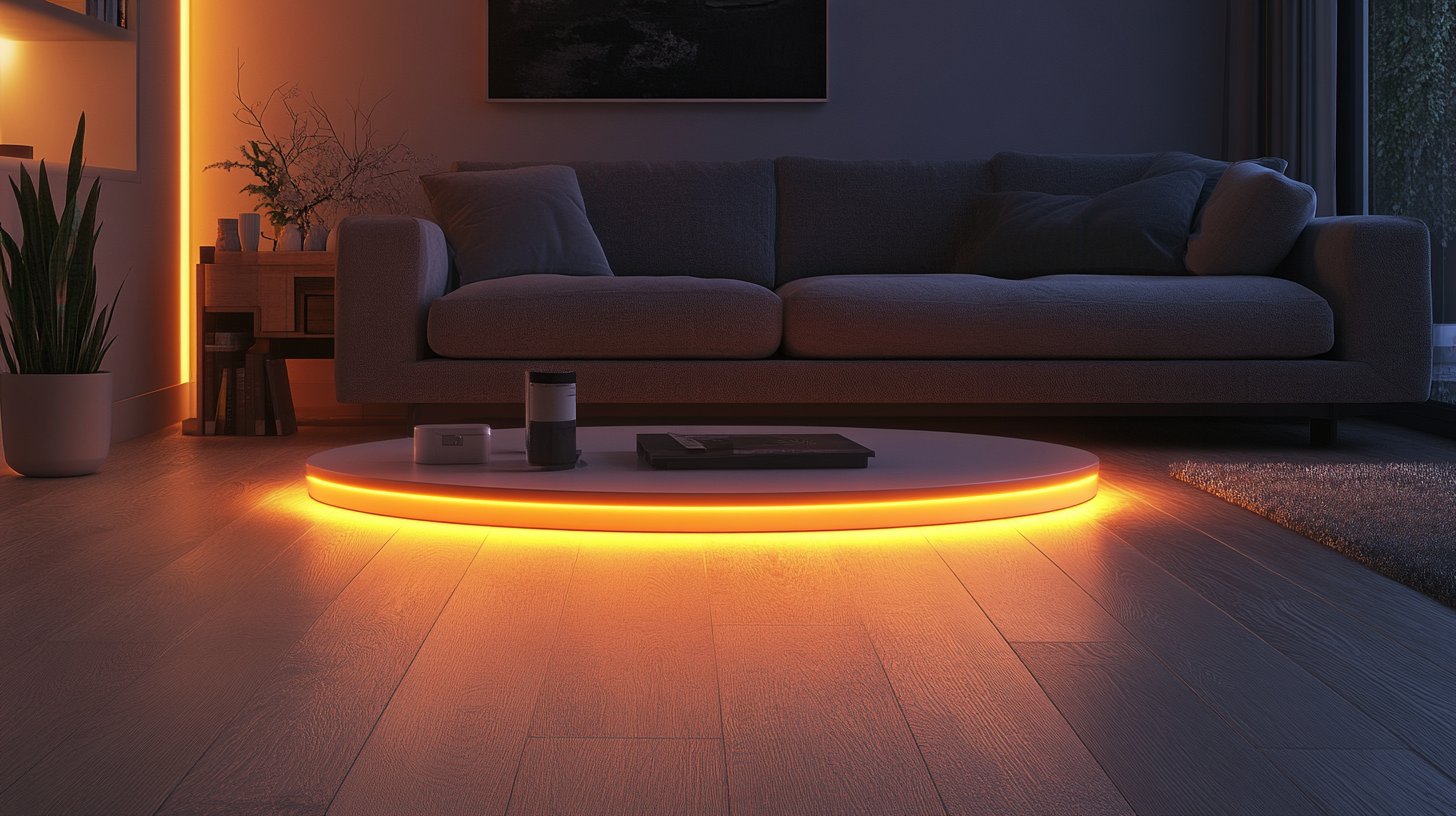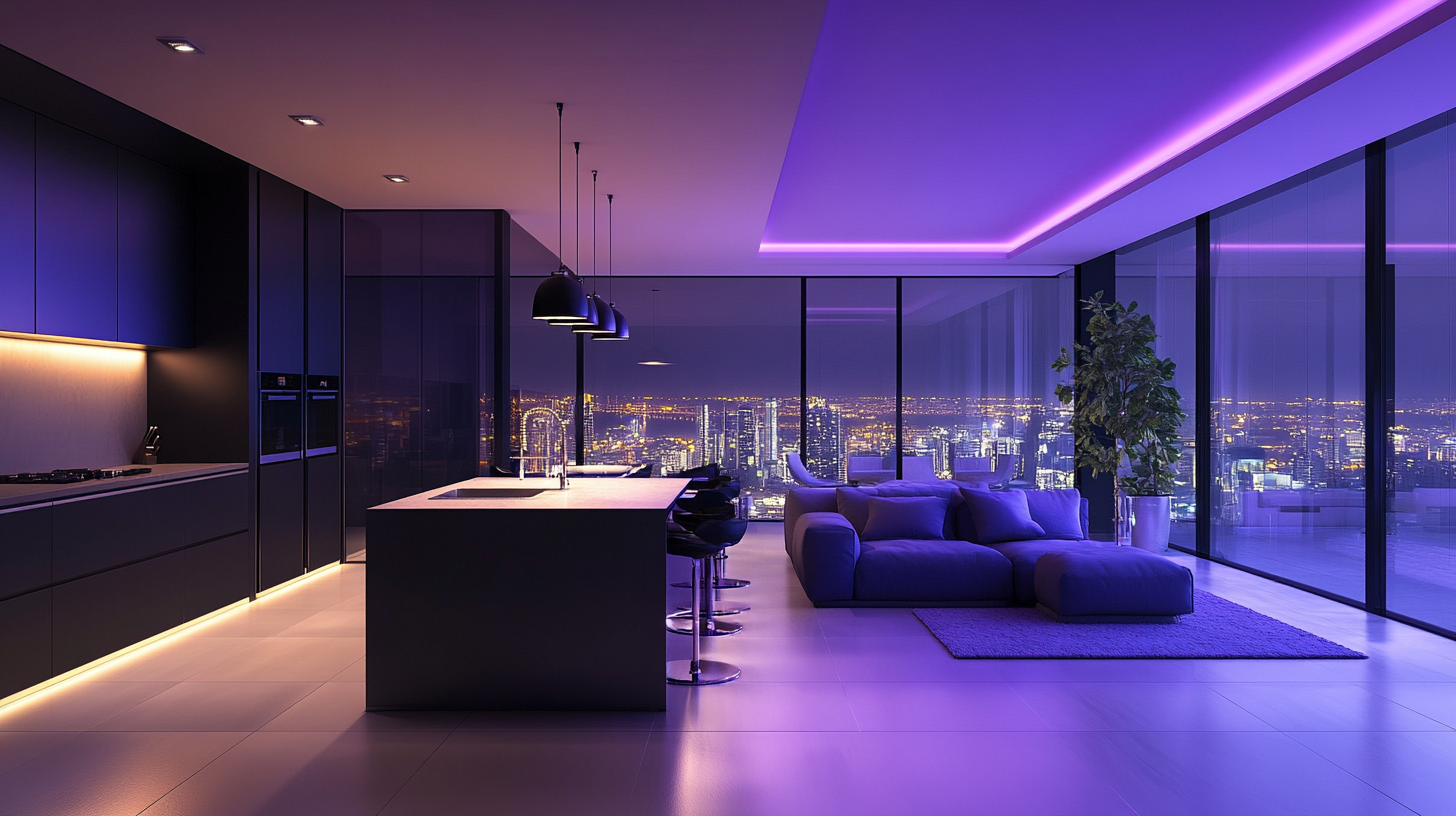2025 Trends in Smart Lighting Products: How to Choose the Best Solutions for Global Procurement
As we approach 2025, the demand for Smart Lighting Products is set to skyrocket, driven by a growing emphasis on energy efficiency and the integration of smart technologies in urban infrastructure. According to recent reports by MarketsandMarkets, the global smart lighting market is projected to reach USD 45.5 billion by 2025, with a compound annual growth rate (CAGR) of 24.4% from 2020 to 2025. This burgeoning sector is not only transforming the way we illuminate our environments but also enhancing user experiences through improved convenience and customization. Businesses and municipalities alike are increasingly investing in these innovative solutions, making it crucial for procurement specialists to understand how to navigate this evolving landscape and select the best Smart Lighting Products that meet their needs. By analyzing current trends and consumer preferences, procurement can make informed decisions that align with sustainability goals and technological advancements.

Key Innovations Shaping the Future of Smart Lighting Technology in 2025
As we look toward 2025, the world of smart lighting technology is set to undergo significant transformations driven by key innovations. One major trend is the integration of artificial intelligence (AI) that enables lighting systems to learn user preferences and adjust automatically. This not only enhances user experience but also optimizes energy consumption, making smart lighting solutions more sustainable and cost-effective.
Additionally, the advancement of Internet of Things (IoT) connectivity will play a crucial role in shaping the future of smart lighting. Products that can seamlessly communicate with other smart devices will create more cohesive environments, allowing for smart homes and offices to function harmoniously. These interconnected lighting solutions can facilitate everything from automated brightness adjustments based on natural light levels to mood settings that align with an individual's daily activities.
Moreover, the push for sustainable solutions is catalyzing innovations in smart lighting products. Manufacturers are prioritizing eco-friendly materials and energy-efficient technologies, such as LED and solar-powered options. As consumers become increasingly environmentally conscious, these advancements will not only meet market demand but also contribute to global sustainability goals, creating a brighter future for urban spaces.

Market Growth Projections: The Global Smart Lighting Industry to Reach $25 Billion by 2025
As the global smart lighting industry is projected to reach a remarkable $25 billion by 2025, it is crucial for investors and companies to adapt their procurement strategies. This growth is driven by increasing urbanization and the rising demand for energy-efficient solutions that enhance user experience while reducing operational costs. According to a recent market analysis, the smart lighting segment is expected to see a compound annual growth rate (CAGR) of 20% over the next few years, highlighting the urgency to seize opportunities in this burgeoning market.
**Tip:** When selecting smart lighting products for procurement, consider scalable solutions that can integrate seamlessly with existing infrastructure. This not only ensures longevity but also enhances the adaptability of your lighting systems to future technology advancements.
In light of the changing investment landscape, as noted by BlackRock’s CEO Larry Fink, diversification and a revised outlook on traditional asset classes could play a pivotal role in funding innovation in smart technologies. The convergence of sectors like automotive and smart lighting, projected to see significant investments—with the automotive blockchain market surging to $9.4 billion by 2034—offers further avenues for strategic development.
**Tip:** Focus on suppliers that are aligned with sustainability goals, as products that prioritize eco-friendliness are likely to gain traction in both consumer markets and on regulatory fronts. Prioritizing sustainable partnerships can facilitate long-term cost savings and boost brand reputation.
Understanding Energy Efficiency: Comparing LED vs. Traditional Lighting Solutions
In 2025, the smart lighting market is anticipated to evolve significantly, driven by advancements in energy efficiency and technology. A key comparison lies between LED and traditional lighting solutions. While traditional lighting methods consume a substantial amount of energy and contribute to higher operational costs, LED technology stands out as an exemplary efficient alternative. According to industry reports, the United States LED lighting market is projected to reach USD 12.8 billion by 2033, reflecting the growing adoption of energy-efficient practices across various sectors.
Dynamic LED lighting, specifically in Controlled Environment Agriculture (CEA), has proven transformative. As noted by Sollum Technologies, by dividing a greenhouse into specific lighting zones, each crop can receive the precise light it needs at optimal times, boosting growth and productivity. This targeted lighting approach not only enhances energy efficiency but also reduces waste, aligning with the increasing demand for sustainable solutions in agriculture. With such innovations, choosing smart lighting solutions becomes paramount for businesses aiming to stay competitive in a rapidly changing market.
2025 Trends in Smart Lighting Products
This chart compares the energy efficiency of LED lighting solutions versus traditional lighting solutions. As we move towards smarter lighting products in 2025, understanding these differences is crucial for procurement decisions.
Integration of IoT and Smart Lighting: Enhancing User Experience and Automation
The integration of IoT with smart lighting systems is set to revolutionize the way users interact with their environments. According to a recent market report from MarketsandMarkets, the smart lighting market is projected to reach $30.41 billion by 2025, driven by advancements in IoT technologies. This growth underscores the increasing demand for intelligent lighting solutions that not only optimize energy consumption but also enhance overall user experience. With features like automatic adjustments based on ambient light and occupancy detection, smart lighting can provide comfort while promoting energy efficiency.
Moreover, the combination of IoT and smart lighting facilitates advanced automation capabilities. A report by Allied Market Research states that the smart lighting segment that incorporates IoT will experience a compound annual growth rate of 20.2% from 2019 to 2026. This rapid development suggests that as smart lighting solutions become more interconnected, users will benefit from personalized settings that adapt to their preferences and routines. For instance, smart lighting systems can be programmed to respond to various triggers, such as time of day or specific activities, significantly enhancing the user experience and creating a seamless atmosphere in homes and workplaces alike.

Evaluating Environmental Impact: The Role of Smart Lighting in Sustainable Practices
The role of smart lighting in sustainable practices has rapidly gained attention in recent years, with industry reports suggesting that the global smart lighting market is expected to reach USD 32.38 billion by 2025, growing at a CAGR of 24.5%. This growth highlights the increasing adoption of energy-efficient lighting solutions that significantly reduce carbon footprints. For instance, smart LED lights utilize 75% less energy than traditional incandescent bulbs, thereby not only enhancing energy savings but also contributing to overall sustainability efforts across various sectors.
Moreover, smart lighting systems are equipped with advanced sensors and connectivity features that optimize energy usage based on real-time conditions. According to recent research from the International Energy Agency (IEA), the widespread implementation of smart lighting technology could lead to a reduction of up to 37% in electricity consumption in commercial buildings alone. This not only translates to lower utility costs but also diminishes greenhouse gas emissions, aligning with global efforts to combat climate change. As organizations prioritize sustainability initiatives, the integration of smart lighting technologies is becoming a vital component of their environmental strategy.
